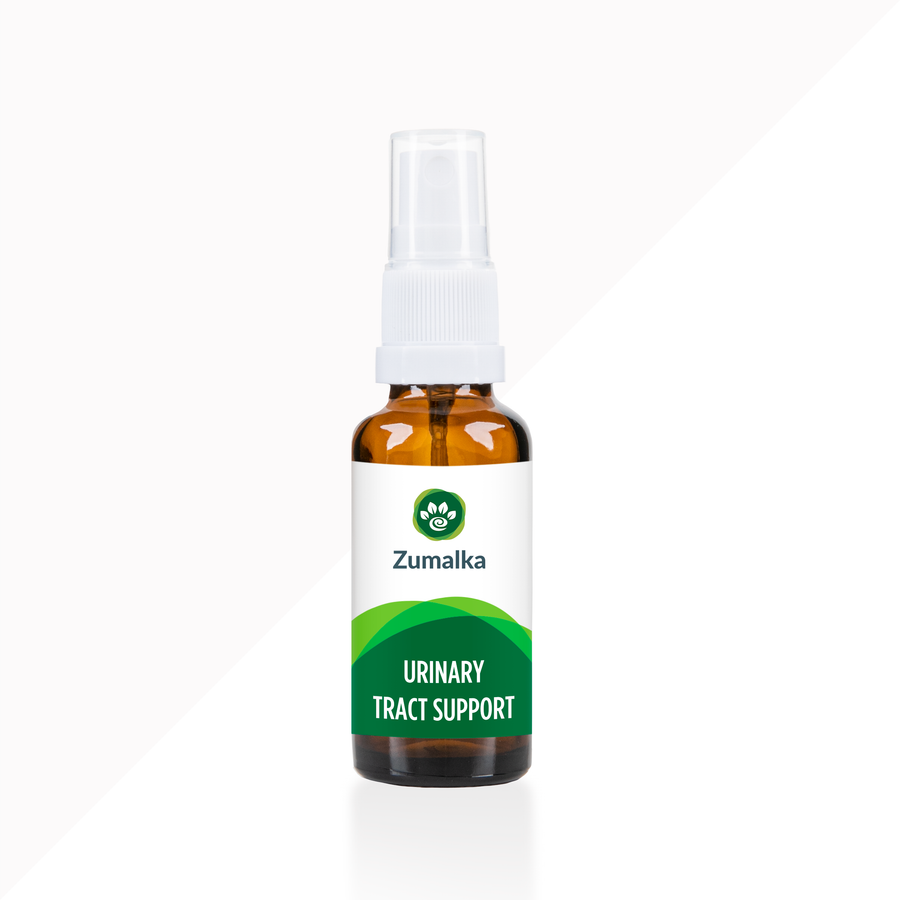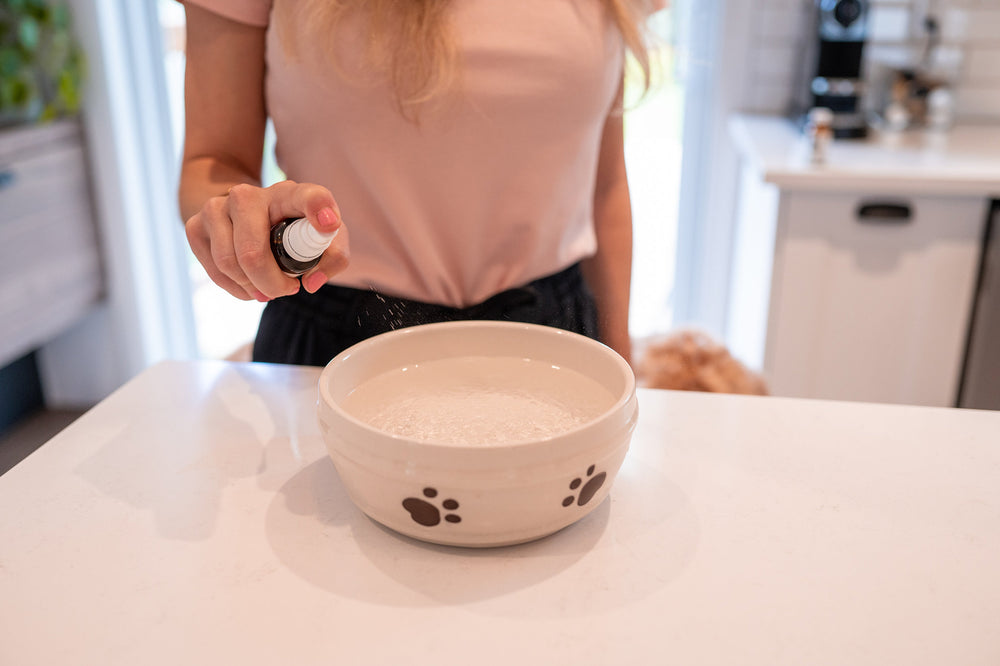Vet-Verified: Treating Separation Anxiety in Dogs – A Practical Owner’s Guide
List of Contents
- How to Tell if Your Dog Has Separation Anxiety
- Common Causes of Separation Anxiety in Dogs
- Separation Anxiety or Something Else? Understanding the Diagnosis Process
- Separation Anxiety in Dogs: Complete, Proven Treatment Methods
- Daily Care Tips for Dogs Struggling with Separation Anxiety
- Exploring Natural Solutions for Canine Separation Anxiety
- Mistakes That Can Make Dog Separation Anxiety Worse
- How to Prevent Separation Anxiety in Dogs
- Working with Professionals to Treat Canine Separation Anxiety
- The Bottomline
- FAQs
Canine separation anxiety is a behavioral condition where dogs experience severe stress when apart from their primary caregivers. This common issue can negatively affect a dog’s emotional health, behavior, and overall quality of life.
Separation anxiety in dogs is more than just a behavioral problem. It’s comparable to a panic attack in dogs. The distress they experience is real and can lead to destructive or harmful actions when left alone.
Dog separation anxiety affects an estimated 20% of dogs, though it's often underdiagnosed. It can cause severe distress, leading to destructive behavior, self-injury, and even owner surrender or euthanasia if left unaddressed.
How to Tell if Your Dog Has Separation Anxiety

Identifying separation anxiety involves observing your dog’s behavior both during your absence and at key moments, like when you're preparing to leave or returning home. Let’s explore the signs to look for.
What dogs do when they have separation anxiety and you’re gone
- Destructive behaviors like chewing, scratching, or digging near doors and windows are common signs of separation anxiety in dogs. These actions typically occur only when the dog is left alone, not when the owner is present.
- Dogs with separation anxiety often exhibit excessive vocalization, including whining, barking, or howling. This behavior is typically persistent and occurs without external triggers, signaling emotional distress when left alone.
- Inappropriate elimination, such as indoor urination or defecation, can be a sign of separation anxiety, even in fully house-trained dogs. This behavior typically occurs only when the dog is left alone, not when the guardian is present.
- Dogs with separation anxiety may engage in self-injurious behaviors like excessive grooming, paw licking, or tail biting. They may also show repetitive movements such as pacing, circling, or trembling when left alone.
- Excessive drooling can be a physical sign of separation anxiety in dogs. In severe cases, they may attempt to escape confinement, risking self-injury such as broken teeth or cut paws.
- Some dogs with separation anxiety may experience physical symptoms like vomiting or diarrhea. Others may refuse to eat meals, treats, or food puzzles when left alone, signs of heightened stress and emotional distress.
Behavioral clues of dogs with separation anxiety before leaving and after returning home
- Excessive attachment is a common early sign of separation anxiety, with dogs constantly following their owners or refusing to be left alone. This clingy behavior, often called “ Velcro dog” syndrome, signals growing emotional distress.
- Dogs with separation anxiety often react to pre-departure cues like picking up keys or putting on shoes. Signs may include whining, pacing, panting, or freezing as they anticipate being left alone.
- Moreover, affected dogs may greet their owners with extreme excitement, even after short absences. This over-the-top reaction reflects their intense emotional distress while left alone.
Common Causes of Separation Anxiety in Dogs
The exact cause of separation anxiety in dogs is often unclear, but certain factors can increase their risk. This section explores how early life experiences, environmental changes, and other influences may contribute to its development.
Early life experiences
- Early life experiences play a major role in a dog’s risk of developing separation anxiety. Puppies separated from their litter too early or adopted from shelters or pet shops are more likely to show anxiety-related behaviors.
- Limited social exposure between 5–10 months of age can increase a dog’s risk of developing separation anxiety. Dogs adopted later in life may also struggle more with adapting to new environments and routines.
Environmental changes
- Major changes in a dog’s environment or routine, like being rehomed, abandoned, or experiencing a sudden shift in their owner's schedule, can trigger separation anxiety. Dogs thrive on stability, and abrupt disruptions can lead to emotional stress and behavioral issues.
- Changes in a dog’s home environment, like moving to a new residence or losing a family member or pet, can contribute to separation anxiety. These disruptions can create uncertainty and emotional distress, especially in sensitive dogs.
- A single traumatic event, such as being left alone during a natural disaster or crisis, can trigger separation anxiety in some dogs. These experiences may leave lasting emotional effects, especially in already vulnerable pets.
Other possible factors
- Additional factors like living in apartments or developing an excessive attachment to their owner may increase a dog’s risk of separation anxiety. Limited space and constant proximity can intensify stress when the owner is away.
- Boredom and lack of mental or physical enrichment can contribute to separation anxiety, especially in under-stimulated dogs. Older dogs may also be more vulnerable due to cognitive decline and reduced ability to cope with stress.
Separation Anxiety or Something Else? Understanding the Diagnosis Process
Because symptoms of separation anxiety can mimic those of medical conditions, it’s important to consult a veterinarian first. Issues like pain, infections, or hormonal imbalances should be ruled out, and a pet homeopathy specialist may offer additional support.
Diagnosing separation anxiety relies on observing behaviors that occur when the dog is alone. Video recordings at home are essential for identifying symptoms accurately and tracking progress throughout treatment.
It’s important to rule out other behavior issues that may mimic separation anxiety, such as incomplete house training, boredom, juvenile destruction, or reactive barking. Identifying the true cause ensures your dog receives the right treatment.
Separation Anxiety in Dogs: Complete, Proven Treatment Methods

Early recognition and intervention are essential to successfully managing separation anxiety in dogs. While treatment takes time and consistency, a patient, multi-faceted approach can lead to meaningful, long-term improvement.
Systematic desensitization and counterconditioning
Systematic desensitization and counterconditioning are the most effective behavioral treatments for separation anxiety in dogs. These methods gradually change your dog’s emotional response to being alone, building comfort, and reducing distress over time.
To emphasize, systematic desensitization involves gradually increasing your dog’s time alone, starting with just a few seconds. Each step is carefully paced to ensure your dog remains calm and free of anxiety throughout the process.
On the other hand, counterconditioning helps reduce separation anxiety by linking the owner's absence with positive experiences. Offering a high-value, food-stuffed toy exclusively during alone time can create a more relaxed, rewarding association with being alone.
Desensitizing pre-departure cues involves exposing your dog to actions like grabbing keys or putting on shoes without leaving the house. Repeating these cues without departure helps break the association with anxiety and stress.
Managing absences
Limiting your dog’s time alone is crucial during the early stages of separation anxiety treatment. Keeping absences short helps reinforce calm behavior and supports steady, long-term improvement.
To support your dog during treatment, consider alternatives like taking them to work, hiring a pet sitter, using doggy daycare, or leaving them with trusted friends or family. Aim for balance, avoiding both prolonged absences and never leaving at all.
Medication and pheromones
Medication is often used alongside behavior modification in more severe cases of separation anxiety to help reduce overall stress levels. While it can support learning and progress, medication alone is rarely a complete solution.
In the U.S., Clomipramine and Fluoxetine are FDA-approved long-term medications for canine separation anxiety, typically taking 4–8 weeks to show effects. Short-acting options like Trazodone or Gabapentin may be used initially to manage acute panic symptoms.
Discuss possible side effects, such as lethargy, reduced appetite, or vomiting, with your veterinarian before starting medication. Once your dog shows improvement, any medication should be slowly tapered under veterinary supervision.
Dog-Appeasing Pheromone (DAP) is a synthetic calming scent that can help reduce behaviors related to separation anxiety. Typically delivered through a plug-in diffuser, it creates a more reassuring environment for anxious dogs.
When used alongside behavior modification, DAP is as effective as Clomipramine in reducing separation anxiety. They offer a gentler alternative with fewer reported side effects.
Daily Care Tips for Dogs Struggling with Separation Anxiety
Create a calm, comfortable space where your dog feels safe and relaxed, ideally away from windows and distractions. Use this area for positive experiences like meals, treats, and soothing music to build a reassuring routine.
Daily exercise is essential for dogs with separation anxiety. Aim for at least 30 minutes of aerobic activity, preferably before you leave. Physical activity helps reduce excess energy and promotes a calmer state during absences.
Incorporating mental stimulation, such as puzzle toys, treat-dispensing balls, scent games, and trick training, can greatly reduce anxiety in dogs. A mentally and physically tired dog is typically more relaxed when left alone.
Keeping greetings and departures calm helps reduce emotional highs and lows that fuel separation anxiety. By staying low-key, you make your comings and goings feel less dramatic and easier for your dog to handle.
Additionally, keeping your dog's daily routine regular helps lower anxiety and makes them feel safer. They may expect times of attention and alone time with predictable timetables, which reduces the stress of everyday transitions.
Exploring Natural Solutions for Canine Separation Anxiety
CALMPET is a natural homeopathic spray designed to support your pet’s nervous system and promote calm, balanced behavior. It may assist with maintaining emotional balance and ease occasional signs of stress, such as sensitivity to noise or restlessness. CALMPET is highly recommended for occasional bouts of anxiety in dogs.
Moreover, our Custom Homeopathic Remedy Consultation for Dogs, Cats & Pets should be considered when dealing with chronic behavioral anxiety in dogs. Frustrated with conventional treatments that haven’t delivered results? Our ONLINE HOMEOPATHIC CONSULTATION offers personalized, root-cause solutions for your pet’s health, conveniently from the comfort of your own home.
Mistakes That Can Make Dog Separation Anxiety Worse
- Punishing a dog for separation anxiety-related behaviors is ineffective and counterproductive, as these actions stem from fear and stress, not defiance. Instead of helping, punishment can intensify anxiety and lead to new behavioral problems.
- Letting a dog " cry it out" can be harmful, reinforcing the fear and distress they feel when left alone. This approach increases stress hormones and can worsen separation anxiety over time.
- Crate confinement can worsen separation anxiety in some dogs, leading to increased stress or even self-injury from escape attempts. Only use a crate if your dog sees it as a safe, calming space.
- Treating separation anxiety takes time and should progress at your dog’s pace. Rushing the process can overwhelm them and potentially intensify their anxiety.
- During separation anxiety training, avoid sudden or extended absences outside of planned sessions. Inconsistent routines can disrupt progress and increase your dog’s stress and confusion.
How to Prevent Separation Anxiety in Dogs

While separation anxiety isn’t always preventable, taking proactive steps early on can greatly reduce the risk. Building healthy habits and emotional resilience helps your dog feel more secure when alone.
When choosing a dog, consider factors that may reduce the risk of separation anxiety, such as selecting a female or sourcing from a stable home environment. Avoid adopting puppies separated from their litter before 60 days, as early separation can increase anxiety risk.
Providing diverse experiences and regular human interaction between 5 and 10 months of age is crucial for healthy emotional development. Early socialization helps your dog build resilience and lowers the risk of separation anxiety.
Teaching independence early helps prevent separation anxiety later in life. Encourage your puppy to spend time alone and gently discourage clingy behaviors, such as constant following or overly excited greetings.
When anticipating major life changes, like returning to work or moving, gradual transitions can help reduce your dog’s stress. Introducing new routines slowly allows your dog to adjust more comfortably and prevents anxiety from escalating.
Working with Professionals to Treat Canine Separation Anxiety
If your dog’s separation anxiety is moderate to severe, or if home strategies aren't working, consulting a professional is essential. An experienced trainer or behaviorist can develop a personalized plan to improve outcomes. These include:
- Veterinary behaviorists (Dip ACVB) can diagnose separation anxiety, prescribe medication, and develop comprehensive treatment plans.
- Certified Separation Anxiety Trainers (CSATs) specialize in behavior modification and can guide you through the desensitization process step-by-step.
- Certified Applied Animal Behaviorists (CAAB or ACAAB) are trained in using desensitization and counterconditioning to treat fear-based behaviors like separation anxiety.
- Certified Professional Dog Trainers (CPDT) can also help, but be sure they have specific experience with fear and anxiety cases.
- A pet homeopathy specialist can help identify and address the root cause of your dog’s separation anxiety, rather than just managing surface-level symptoms. This holistic approach supports long-term emotional balance and well-being.
When choosing a professional, prioritize those who use positive reinforcement methods. These science-backed techniques are effective, humane, and essential for building trust and reducing anxiety in dogs.
The Bottomline
Separation anxiety in dogs is a difficult but manageable condition. With the right strategies, consistency, and compassionate care, your dog can recover and enjoy a calmer, more secure life.
The ultimate goal in treating separation anxiety is to help your dog feel secure and confident when alone. Reducing their dependence on you builds emotional resilience and promotes long-term well-being.
Consistency, commitment, and flexibility in your approach are key to successfully managing separation anxiety. With ongoing effort, you can greatly improve your dog’s quality of life and your own.
FAQs
How do you help a dog with separation anxiety?
Help a dog with separation anxiety through gradual desensitization, structured routines, mental enrichment, and positive reinforcement. Consistency, patience, and expert guidance can significantly improve your dog’s comfort and emotional well-being.
How long does separation anxiety last in dogs?
The duration of separation anxiety in dogs varies based on severity, consistency of treatment, and individual temperament. With proper training, many dogs show improvement within weeks to months, especially with professional support.
How do I stop my dog from barking when I leave?
To stop your dog from barking when you leave, use desensitization training, provide engaging toys, maintain a calm routine, and avoid emotional departures. Consistent reinforcement and expert guidance can significantly reduce anxiety-driven barking.
How to calm a dog down from anxiety?
To calm a dog with anxiety, create a quiet environment, use calming aids like pheromones or music, provide mental stimulation, and maintain a consistent routine. Gentle training and professional support can enhance long-term emotional stability.
What are the signs of separation anxiety in dogs?
Excessive barking, destruction, house soiling, drooling, pacing, and clingy behavior are typical symptoms of separation anxiety in dogs, which is usually triggered by being left alone or sensing an impending departure.
What are the signs of anxiety in a dog?
Signs of anxiety in dogs include pacing, trembling, excessive barking, drooling, destructive behavior, clinginess, and loss of appetite. Dogs may also exhibit restlessness or compulsive actions in response to stress or unfamiliar environments.
How to help a dog with separation anxiety?
To help a dog with separation anxiety, use gradual desensitization, provide mental and physical stimulation, establish a consistent routine, and consider calming aids or professional guidance for long-term behavior improvement and emotional support.
How to massage a dog?
To massage a dog, start with gentle strokes along the neck, back, and shoulders using light pressure. Focus on relaxed areas, avoid bony spots, and watch for cues. Regular massages can ease tension and promote bonding.
How to stop a dog's anxiety whining?
To stop dog anxiety whining, identify the trigger, use calming techniques, maintain a consistent routine, and reinforce quiet behavior. Desensitization training and enrichment activities can reduce stress and help your dog feel more secure.
What not to do with dog separation anxiety?
With dog separation anxiety, avoid punishment, "cry it out" approaches, and sudden absences. Don’t rush training or force crate use if it increases stress. Inconsistent routines and ignoring early signs can worsen the condition.









Thank you for sharing the blog related to separation anxiety in dogs. I felt some symptoms in my dog. I think I need to take attention to my dog more. I appreciate your tips.
What i do is exercise my dog at least 30 minutes before i leave the house. Just like us the human, when we get tired, we need rest. so a tired dog will quickly go into a resting mode that will relax your dog and divert its attention to either food or sleep
If I am lack of time to exercise my dog, before I leave the house, I will get items or clothes that have my smell for my dog in advance. Just before I leave the house, play specialized soothing dog music (https://cutt.ly/5wzhVx) that helps my dog to relax and slowly fall asleep
Hope the above help
Thank you for this separation anxiety. My almost 7 years old whippet. She gets pre anxiety when I get ready to leave the house.. At home very anxiety ridden, follows me until I do leave. I feel terrible I hurt my baby. She looks so sad. My home is dysfunctional and effects her. I live her so much. She was lost 2 years ago. My son lost her in a store parking lot. List 4 nights, I found her 5 days later. Thank you, this is a very sad situation. She will be seeing her vet soon. Will discuss this with her. My cat is the best.
When I go up to bed my dog cries until I come down to her. We have space saver stairs so she can’t come to bed with me.
hi thanks for the information :)
Leave a comment